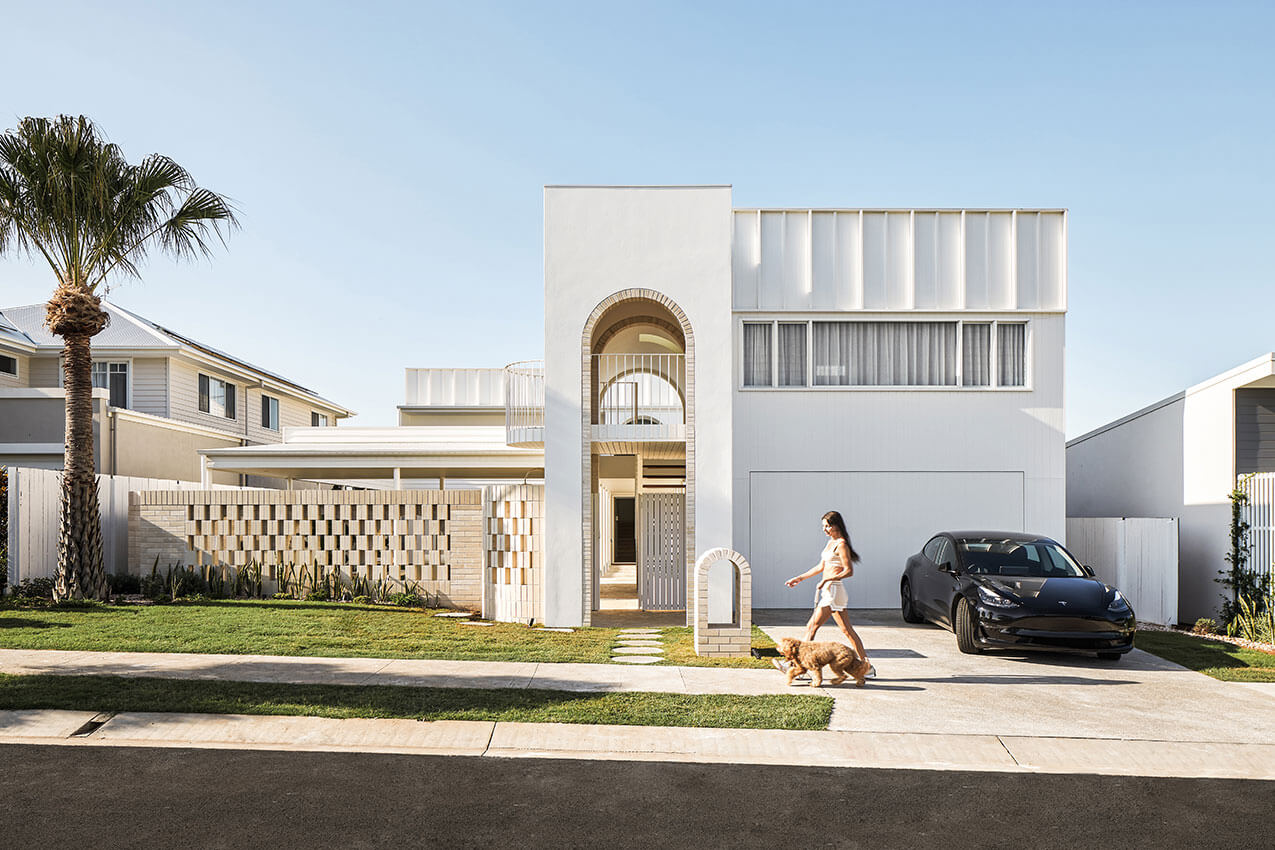Ziggys’ Villas | Harley Graham Architects
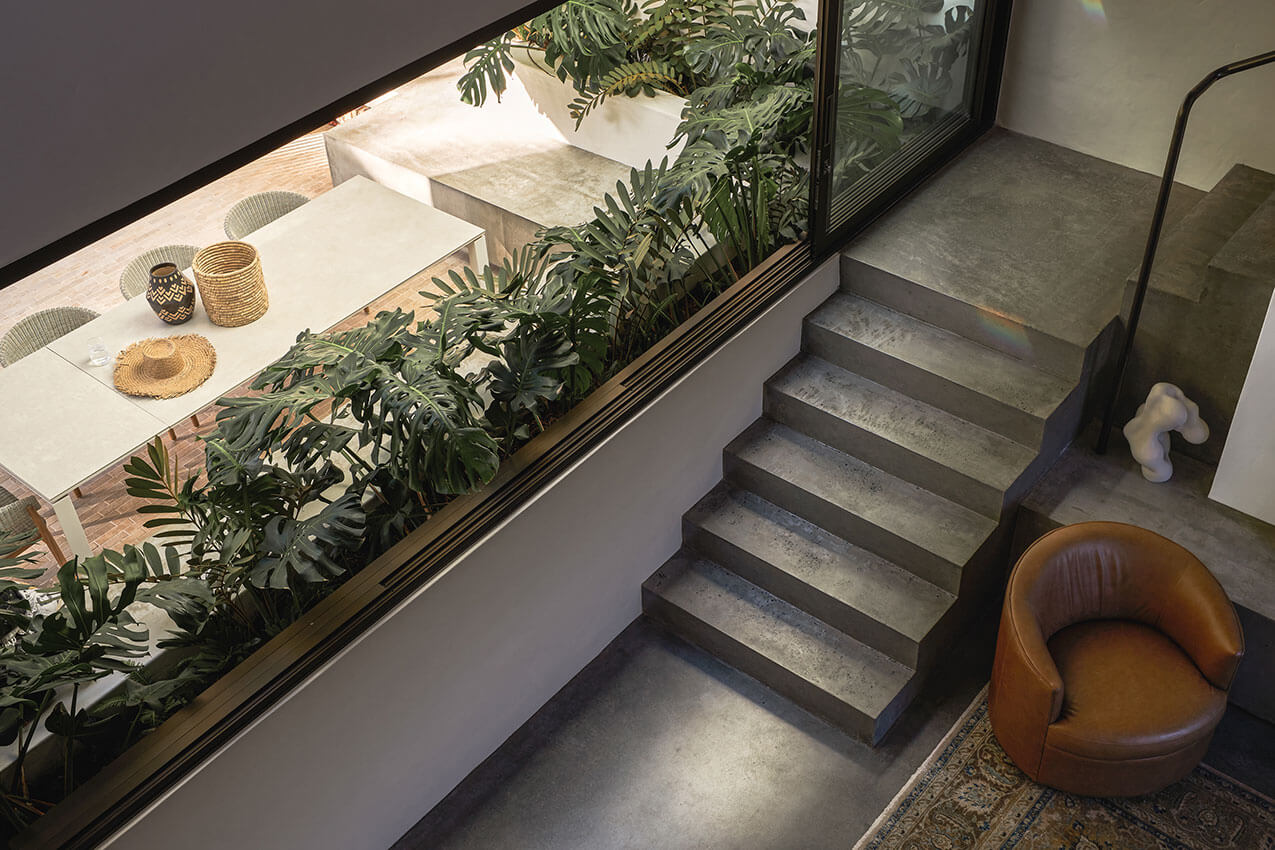
Ziggy’s Villas in Byron Bay respond ingeniously to surging housing demand in a picturesque coastal locale. Situated just 50 meters from the beach on a 710m2 suburban plot, these interconnected residences exemplify a progressive strategy for achieving density. The project, featuring two 3bedroom homes with individual gardens, pools, and garages, strikes a harmonious balance between maintaining Suffolk Park’s relaxed ambiance and meeting the need for increased density. Thoughtful design and strategic corner block utilization create distinct entities with separate street frontages. Built during the pandemic, costeffective measures, such as blockwork and streamlined construction, were employed. The exterior showcases a solid textured red brick fence, enclosing a garden, plunge pool, and doubleheight outdoor room, fostering an open, inviting atmosphere that seamlessly blends indoor and outdoor spaces. Ziggy’s Villas exemplify commendable densification and neighborhood preservation amid a housing shortage.
Beach House | bureau^proberts
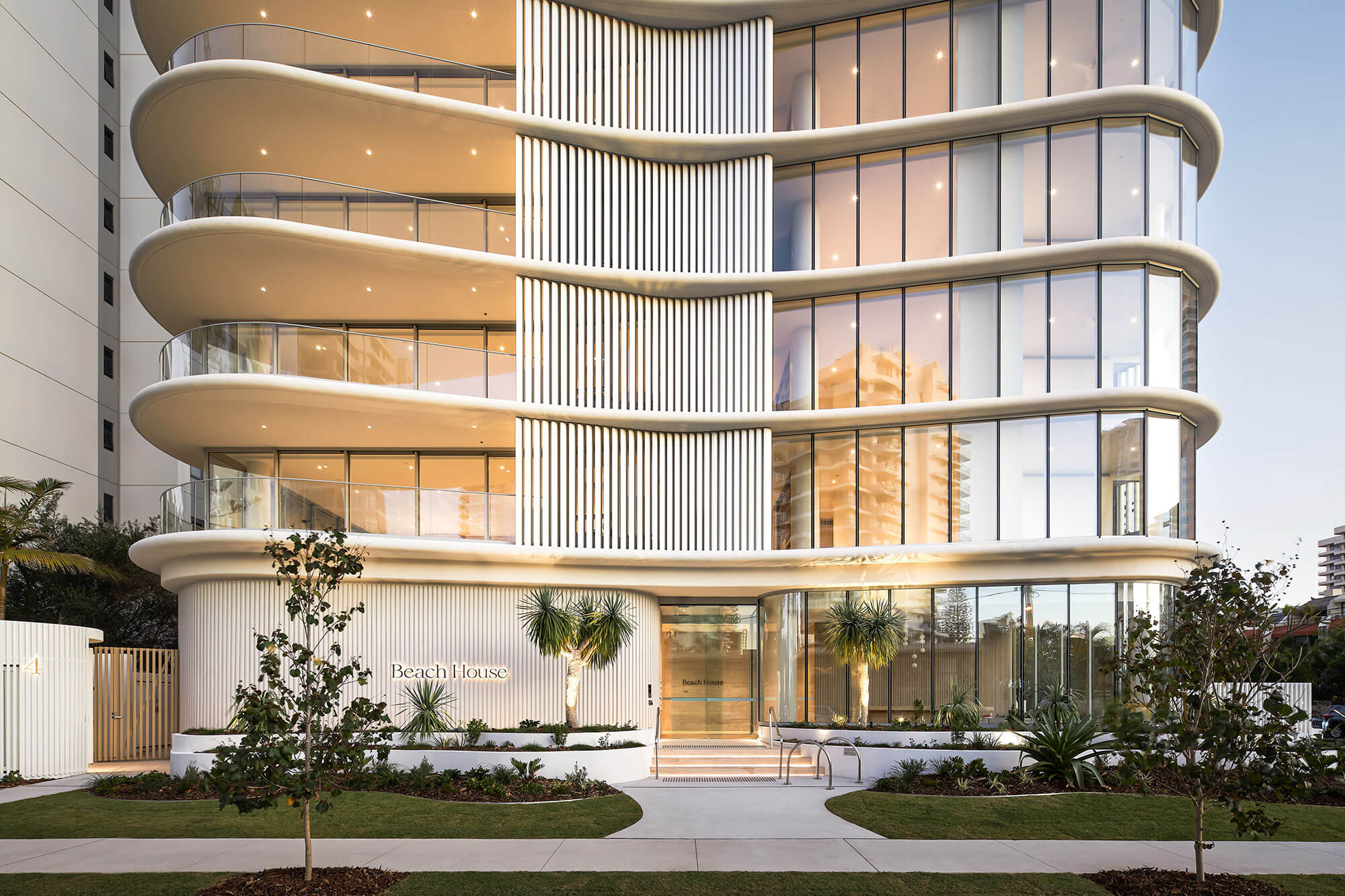
Beach House is designed to deliver the amenity and sophistication of a private beach house while defining a new architectural type: the whole floor apartment. The architectural expression celebrates the organic forms of coastal landscapes, shifting sands and waning tides. Influenced by Gold Coast’s early beach house architecture, characterised by broad verandas, open breezeways, and a connection to the outdoor environment, the development breaks away from traditional compressed apartment layouts to create internal vistas capturing views from east to west. Large balcony decks to the east, create an extension to the living space and allowing for maximum coastal engagement. As an abstraction of the sweeping Gold Cost Coastline, the tower’s expression is defined by curved, bullnose slab edges and the vertical rhythm of blades encircling the perimeter. Embodying the essence of the natural environment, Beach House emerges as a distinctive and carefully crafted form that seamlessly integrates with its coastal surroundings.
Birkalla House | Aspect Architecture
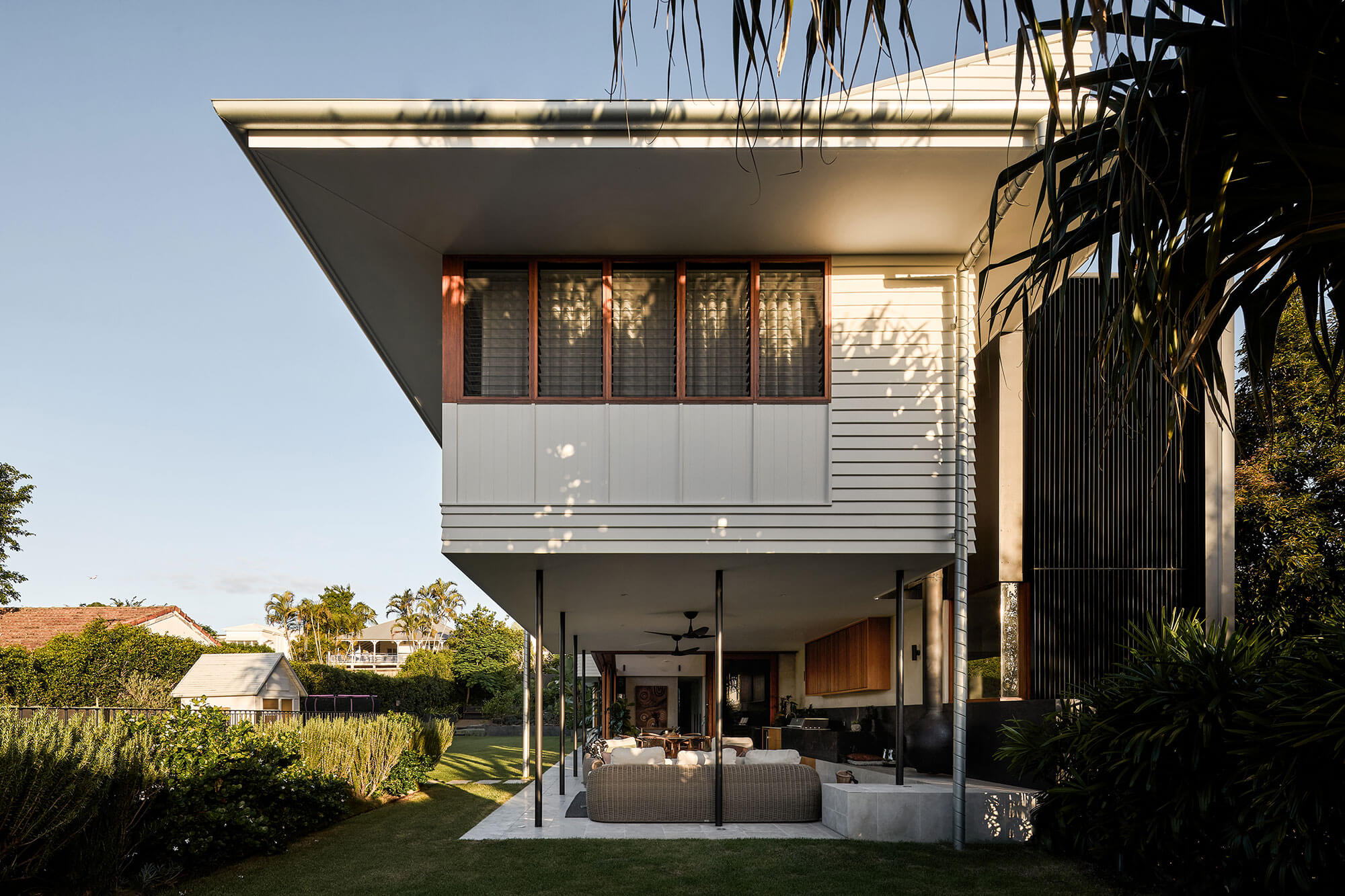
Inspired by the neighbouring homes and the existing urban fabric of Brisbane City, this family home offers stillness and solace designed to rest within its busy surroundings. The home achieves a balance between expansive city views, controlled connection to the street, serene retreats within lush gardens and a neutral palette that fosters a harmonious atmosphere. Positioned on a sloping and elongated site, the building form unfolds through a unique elongated spine with a central gathering point that draws the landscape through the whole site. The use of masonry as the lower building material not only anchors the home but makes a statement of enduring permanence and allows the higher portion of the building to sit lightly within the site. The thoughtful planning and response to site topography and orientation enable the home to maximise a green oasis within the city context for gathering and play.
Kiamba Valley Farmhouse | Aspect Architecture

Located in the Sunshine Coast Hinterlands, the Kiamba Valley Farmhouse draws from the site’s history of cattle farming, to create a dwelling that celebrates the traditional vernacular of the Queensland farmhouse. Anchoring itself harmoniously amid the rolling hillside, this family residence is a tribute to the joys and challenges of rural living. The sprawling outhouse style pavilions, characterised by meticulous craftsmanship and robust construction, lay the groundwork for the residence’s future narratives. After residing in the onsite cottage for an extended period, the owners recognised the need for a more expansive home to accommodate their growing family, while strategically elevating the different and somewhat undiscovered vantages of the property they have always known. The choice to maintain a sense of the traditional with the new resulted in a home that combines a sense of people and place.
The Island House | BDA Architecture
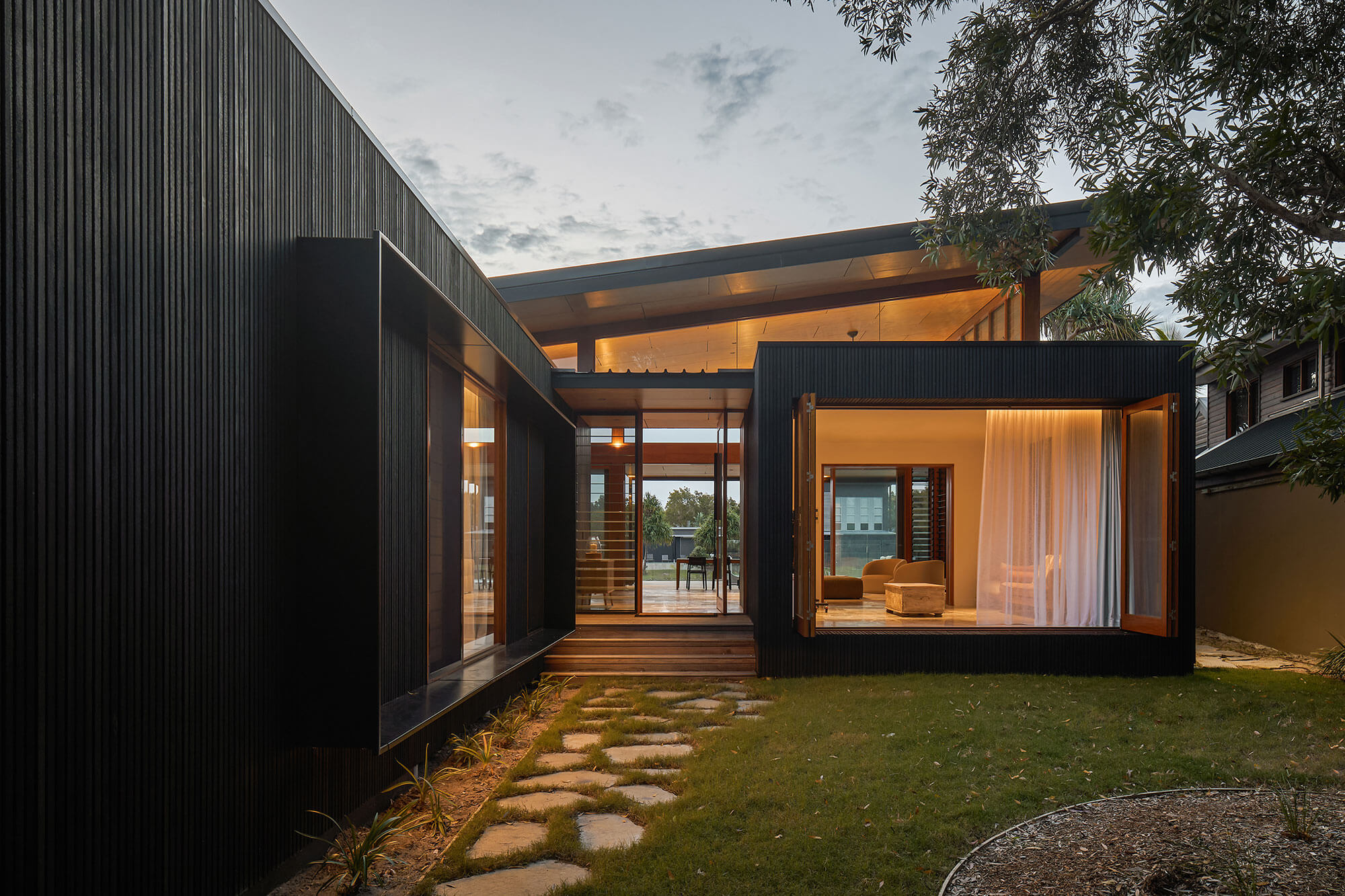
The Island House is a home away from home. Located on South Stradbroke Island (Minjerribah) the holiday home nestles within the natural landscape allowing the residents to seamlessly be connected with the rainforest and the local wildlife.
The pavilionlike forms define the public and private spaces. The materiality of the charred timber clad box defines the private bedroom wing whilst the new guinea rosewood datum line with the clerestory glazing and plywood ceiling identifies the public areas.
The architecture aspires to reinforce the identity of place through site positioning, a climatic response, retention of the existing landscape and adaption of raw materiality. The natural material palette of charred timber and new guinea rosewood creates a warmth and connection with the surrounding native trees.
The dwelling aspires to create a series of interior sequential spaces that change in scale, experience and materiality whilst providing visual connections to the Minjerribah landscape.
The Cottage | Justin Humphrey Architects
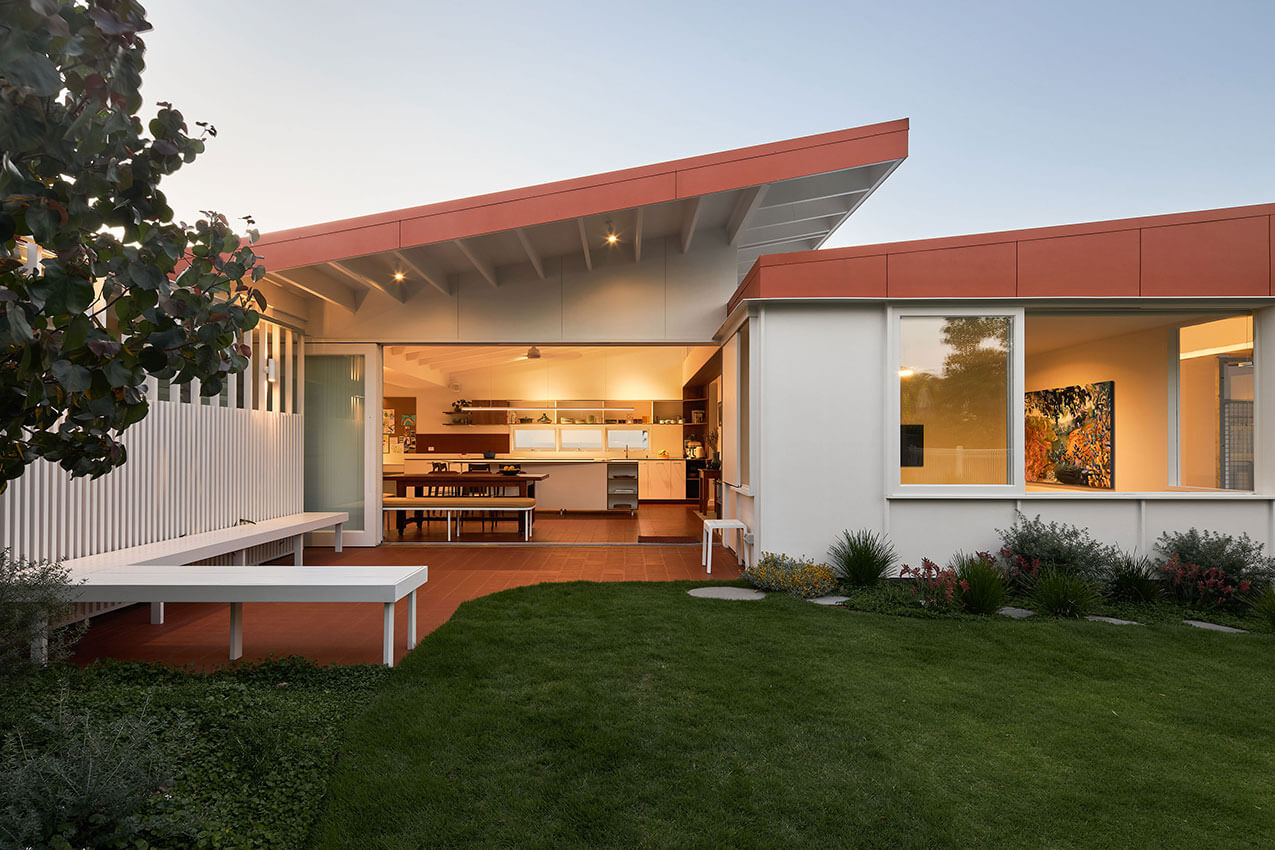
arca.house | Hogg&Lamb
